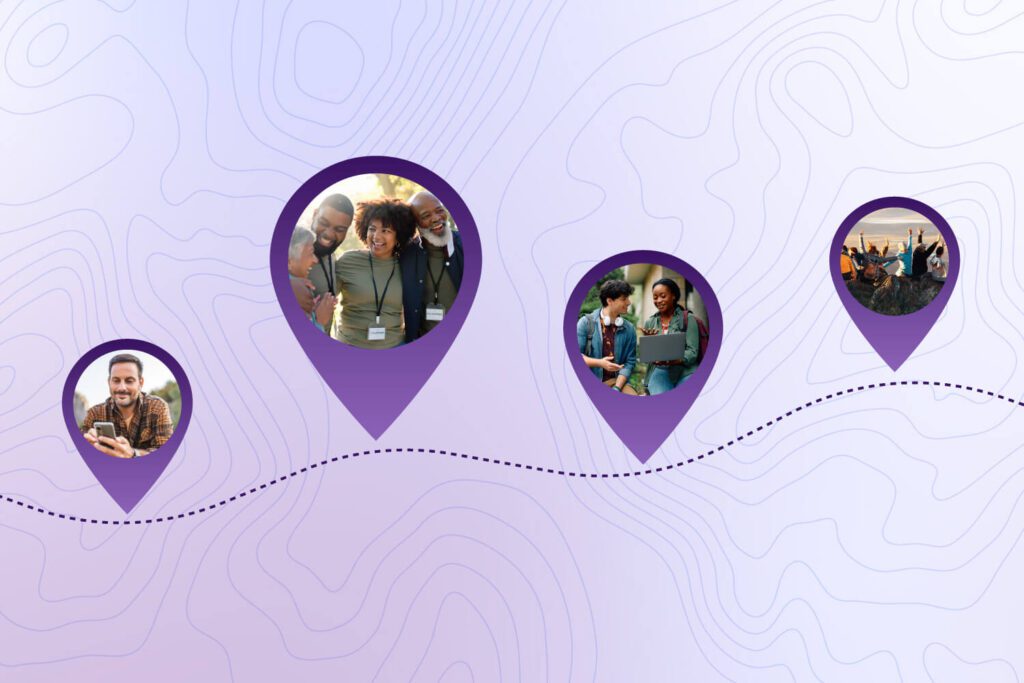Adopting a case management solution: 3 essential steps

For employees at nonprofit organizations, there is always something to be done at all hours of the day—from fundraising to community outreach to serving constituents. Because of this, adopting a case management solution becomes particularly appealing.
An effective solution can not only save valuable hours of your nonprofit staff’s time, but it can handle everything from optimizing case workflow to securing more funding by illustrating your organization’s impact. To help you choose and implement the right case management solution for your nonprofit, let’s walk through three essential steps for success.
1. Find your case management solution
Since no two organizations are the same, the ideal case management solution for your nonprofit will depend on your unique goals and resources. Before you begin researching your options, conduct an internal needs assessment to determine your organization’s specific needs across each department. This information should guide your approach and help you figure out the features and software capabilities you should prioritize.
Whether your nonprofit is interested in increasing program efficiency, optimizing workflows, or electronic case and data management, different solutions will empower you to achieve these objectives in different ways. To find a solution that can help you accomplish all of your goals, look for one with:
- Robust reporting and analytics to better serve each constituent’s unique needs
- A customizable infrastructure that can be tailored to meet the demands of your organization
- Cloud-based storage for optimum flexibility and program scalability
- Assistive data accuracy and consistency tools
- Outcome measurement to assist with proving your impact and securing more funding
Additionally, keep an eye out for useful features, such as mobile capabilities, that allow your staff members to operate more conveniently and effectively on smartphones and tablets. This ensures that the focus remains on providing the highest quality of service to constituents regardless of the time or location.
2. Prepare your organization
Before implementing your newly chosen solution, take the time to prepare sufficiently with these next actions:
Get buy-in
Successfully adopting a new case management solution depends upon the support and cooperation of your nonprofit’s staff. To get everyone on board, consider the following tips:
- Have a solid pitch. In other words, be prepared to explain exactly why your organization needs to transition to a new solution so everyone can be on the same page moving forward.
- Show, don’t tell. Rather than merely telling your team about the excellent solution you’ve found, show them what makes it the perfect choice for your nonprofit. Will it reduce time during intake? Optimize program assignment? Feel free to get specific and demonstrate how the new solution will improve your team’s day-to-day workflow.
- Be transparent. Any new software comes with a learning curve, but through openness and honesty, you’ll be able to manage expectations, instill confidence, and secure support from staff.
The more you communicate about your new case management solution, the smoother the transition will be. Furthermore, remember to offer staff members the opportunity to provide their feedback or concerns so you can address them early on.
Plan thoroughly
What will happen when, and who will own what? What can your organization and staff members expect during each phase of the implementation?
One of the most important aspects of planning is assigning ownership. Instead of viewing the entire project as a company-wide responsibility, break it down into manageable tasks. For example, delegate user testing to case managers or training to program managers. Two key responsibilities to assign ownership for involve:
- Training end users. Assign an individual, team, or department to this task. While the software provider will likely provide assistance, one of the best ways to learn is through teaching. With this in mind, ask staff members who will need to use the software the most to conduct the training. They’ll be experts in no time.
- Setting up a framework for admin support. Proactively account for gaps in knowledge by setting up meetings for additional training and data integrity checks once the system is live. Since case management software is integral to a nonprofit’s success, it’s critical to maintain a high level of quality and functionality after implementation.
By communicating expectations and responsibilities upfront, your nonprofit can ensure that everyone knows how they can best contribute to successfully adopting your new case management solution.
3. Manage the transition
Once your organization has begun implementing the new solution, follow these best practices to ensure a seamless and hassle-free transition:
- Pull in key staff members during the testing phase. Take the time to familiarize key stakeholders with the software for visibility and possible troubleshooting.
- Identify a superuser early on. Find a team member who is comfortable with the software and enlist them to support others in the organization with tips and guidance.
- Monitor the adoption. Has everyone made the transition? Do they need more training? Is the functionality meeting their needs? Understanding any early hurdles will help increase usage and efficiency over time.
- Incentivize usage and clean data. For example, offer a free meal to the team with the most complete intake fields each month.
- Get ahead of staff questions. Try to anticipate potential questions from staff members and create an FAQ resource to send out before internally launching the software.
Separate the entire transition into easy-to-follow phases and set clear deadlines to keep everyone on track. It takes time to fully adopt a new case management solution, so be patient with your staff members and provide them with plenty of resources to smooth the transition.
Reaping the benefits of your case management solution
With proper planning and implementation, your nonprofit can hit the ground running with all the benefits associated with your new case management software. You’ll not only free up staff time to focus on boots-on-the-ground community outreach, but you’ll have all the data you need to demonstrate your increased impact to funders and show them how you’re fulfilling your purpose.
Ready to Get Started?
Work with Bonterra



